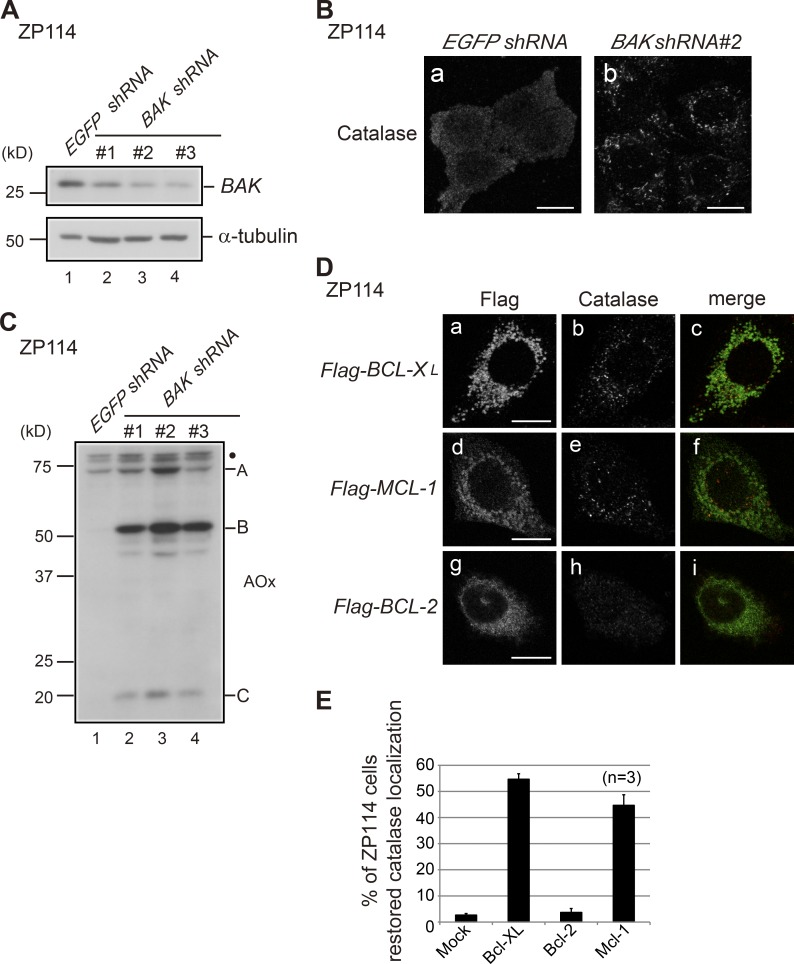Figure 2.
BAK inactivation restores peroxisome biogenesis in ZP114 cells. (A) The effect of BAK RNA interference was verified by Western blotting. ZP114 cells transfected with EGFP shRNA and each of three different BAK shRNA plasmids were analyzed by Western blotting with antibodies to BAK and α-tubulin. (B) ZP114 cells transfected with EGFP shRNA and BAK shRNA were immunostained with anticatalase antibody. Note that numerous peroxisomes are detectable in b. (C) ZP114 cells transfected with EGFP shRNA and three BAK shRNA plasmids were subjected to Western blotting with anti-AOx antibody as described in Fig. 1 B. A, B, and C denote A, B, and C chains, respectively; the dot indicates nonspecific bands. (D) ZP114 cells were transfected with cDNAs each for Flag–BCL-XL, Flag–MCL-1, and Flag–BCL-2. The cells were immunostained with antibodies to Flag and catalase. Merged views of panels a plus b, panels d plus e, and panels g plus h are shown in c, f, and i, respectively. (B and D) Bars, 10 µm. (E) Percentages of the cells restored in the catalase and the localization of catalase to peroxisomes in total cells expressing Flag-tagged proteins (100 cells each) are presented. Data represent means ± SD.

